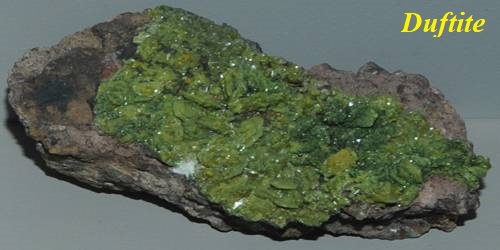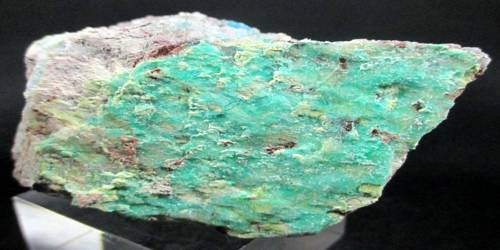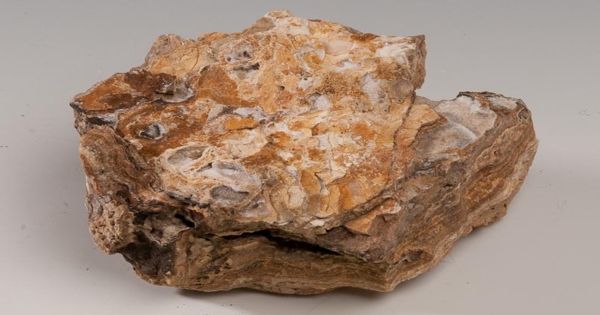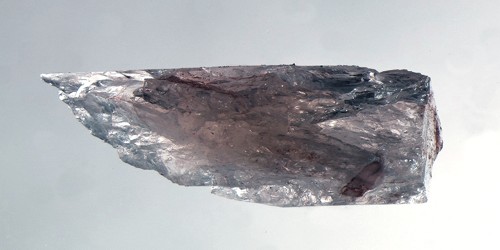Duftite is a relatively common arsenate mineral with the formula CuPb(AsO4)(OH), related to conichalcite. The color of duftite gives it its great note of distinction. The color is usually an attractive green of one shade or another. It is a member of the adelite-descloizite Group, Conichalcite-Duftite Series.
Named for Gustav Bernhard Tuft who was the General Manager at the Tsumcor (Tsumeb) mine in Tsumeb, Namibia where the mineral gets its type locality. The type locality is the Tsumeb Mine, Tsumeb, Otjikoto Region, Namibia.
General Information
- Category: Arsenate minerals
- Formula: PbCuAsO4(OH)
- Crystal system: Orthorhombic
- Crystal class: Disphenoidal (222)
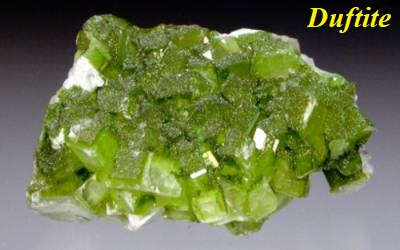
Properties
- Formula mass: 426.67 g/mol
- Color: Green, olive green or grey-green. Generally zoned due to compositional variations
- Cleavage: Indistinct
- Fracture: Uneven to conchoidal
- Mohs scale hardness: 4.5
- Luster: Vitreous on fracture surfaces and dull on crystal faces
- Streak: Pale green or white
- Diaphaneity: Crystals are transparent to translucent
- Specific gravity: 6.4 (measured), 6.60 (calculated)
- Optical properties: Biaxial (-)
Occurrence
Duftite is an uncommon mineral that occurs on oxidized hydrothermal base-metal deposits. Localities where the Duftite is abundant include in Namibia, Morocco, France, Germany, Russia, England, Mexico, the United States, and Australia, among many other minor localities.
Reported from Argentina, Australia, Austria, Chile, the Czech Republic, France, Germany, Greece, Italy, Japan, Mexico, Namibia, Poland, Portugal, Russia, South Africa, Spain, Switzerland, the UK, the US, and Zimbabwe.
It occurs in association with olivenite, mottramite, azurite, malachite, wulfenite and calcite in the Tsumeb, Namibia deposit. It occurs with bayldonite, beudantite, mimetite and cerussite in the Cap Garonne mine, France.
Information Source:
